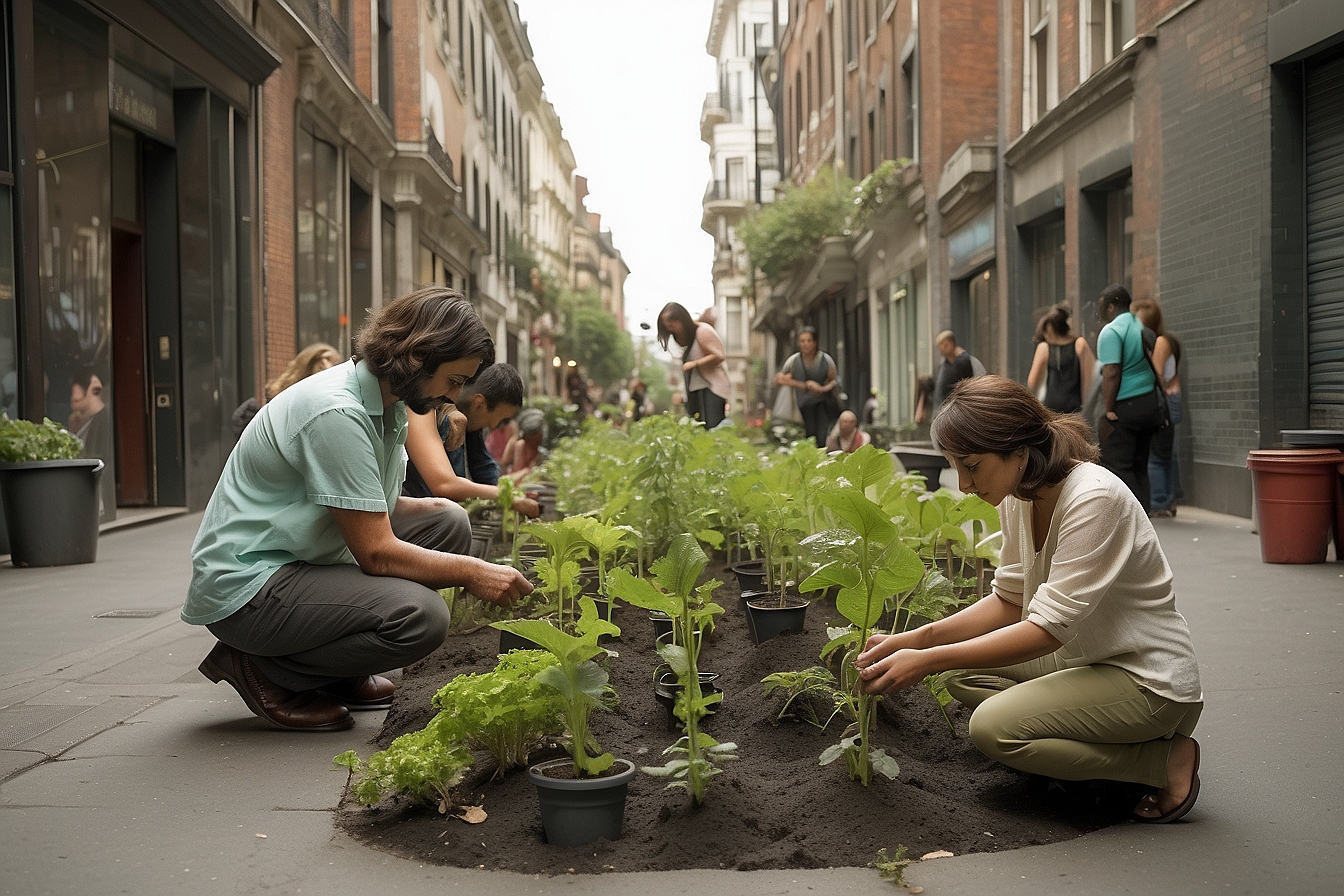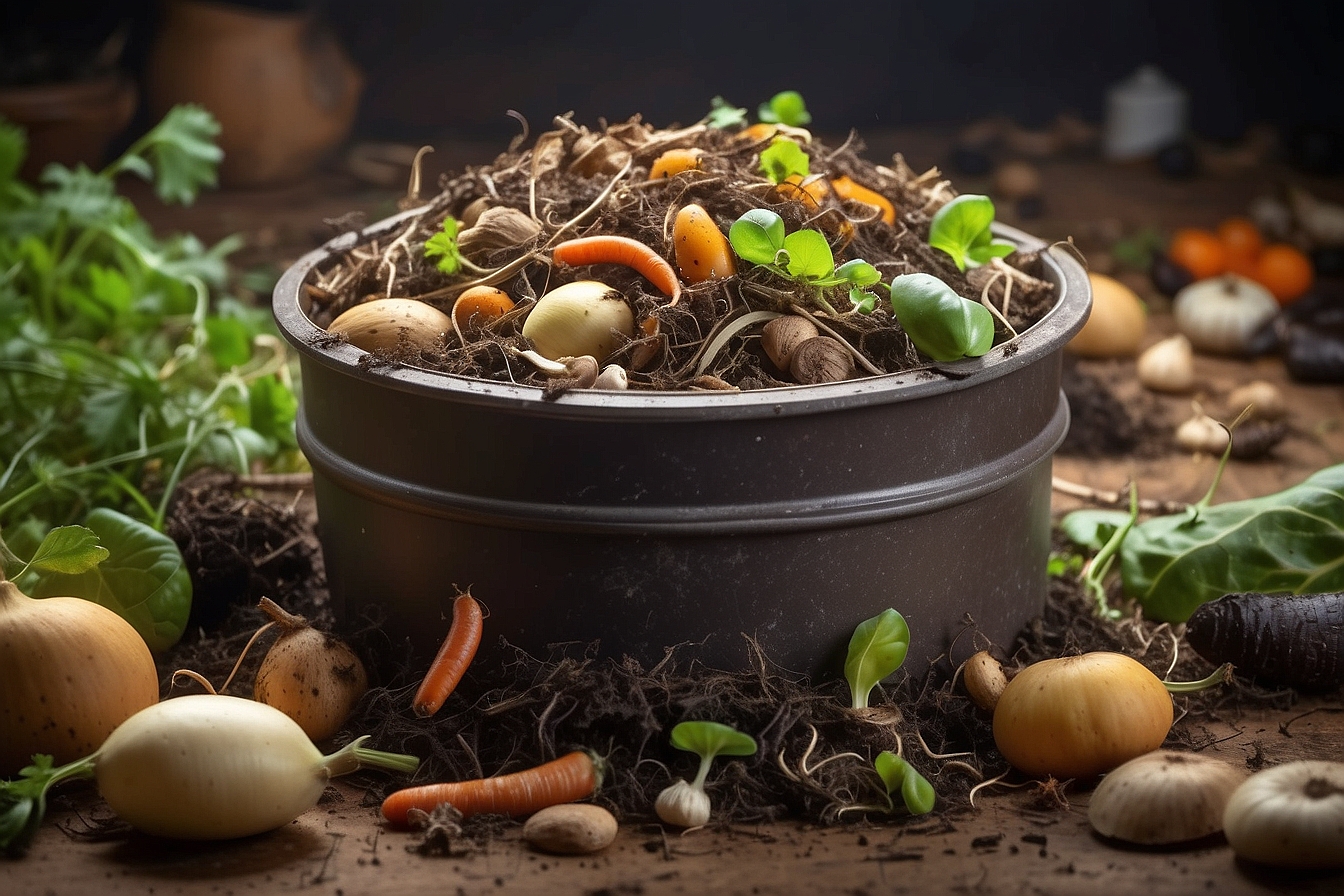Are you tired of seeing polluted waterways and erosion caused by stormwater run-off? As an environmentally-conscious individual, I understand how frustrating it can be to witness the damage urban runoff can cause. Did you know that in the UK alone, over 2 million tonnes of soil are lost annually due to stormwater run-off? In this blog post, I will show you how to combat this issue by creating your own DIY rain garden. Get ready to make a positive impact on the environment!
Key Takeaways
- Building a rain garden involves choosing an appropriate location, calculating its size based on the runoff area, and digging to the correct depth to facilitate water absorption.
- Selecting native plants for your rain garden attracts pollinators and supports local biodiversity while deep-rooted species enhance water filtration and soil stability.
- Maintenance activities such as mulching with organic material, redirecting downspouts, weeding, and monitoring for pests are vital for a healthy rain garden that effectively manages stormwater.
- Rain gardens filter pollutants from runoff before they reach waterways; this helps in reducing environmental pollution and protecting aquatic ecosystems.
- By creating a DIY rain garden, individuals can directly contribute to groundwater replenishment through natural infiltration processes.
Explanation of the negative impact of stormwater run-off
Stormwater run-off hits our streets and picks up pollutants like oil, pesticides, metals, and dirt. This dirty water then washes into our rivers and lakes, harming fish and wildlife.
It also overloads our storm drains leading to floods that can damage homes and infrastructure. We all face the consequences when the balance in our local ecosystems tips, as clean water becomes scarce.
Without proper stormwater management strategies like green infrastructure or sustainable landscaping techniques in place, urban runoff deteriorates water quality at a shocking rate.
Not only does this affect aquatic life but it equally threatens public health by contaminating drinking water sources. To keep nature thriving around us, we need efficient systems to ensure that rainfall is absorbed naturally into the ground rather than becoming destructive runoff.
What is a Rain Garden?
A rain garden is a shallow, vegetated depression that collects and filters stormwater runoff from impervious surfaces like roofs, driveways, and roads. Its purpose is to reduce pollution by allowing the water to infiltrate into the ground naturally.
Definition and purpose
A rain garden serves as a practical solution for urban water runoff and soil erosion control. It’s essentially a shallow, vegetated basin that captures, treats, and infiltrates rainwater from impervious surfaces like roofs and driveways.
By mimicking the natural absorption of a forest or meadow, it reduces water pollution and helps in groundwater recharge.
We harness the power of eco-friendly gardening with this low-impact development to combat runoff pollution. The purpose is twofold: to manage water sustainably while creating habitats for local wildlife.
Through strategic planting of native plant species, we not only enrich the environment but also bolster watershed protection and promote environmental stewardship within our communities.
Benefits of Rain Gardens
Rain gardens provide multiple benefits, such as reducing water pollution and protecting local waterways. They also help replenish groundwater and create habitats for pollinators, contributing to a healthier ecosystem.
Reduction of water pollution
To reduce water pollution, rain gardens serve as effective tools by filtering out contaminants and preventing them from entering the stormwater system. Native plants in a rain garden have deep roots that help to absorb excess nutrients, sediment, and pollutants from runoff, promoting cleaner water.
This natural filtration process ensures that harmful substances do not reach waterways, safeguarding aquatic ecosystems and enhancing overall environmental conservation efforts.
Implementing rain gardens also aids in lowering the amount of untreated stormwater flowing into rivers and streams. By intercepting runoff before it enters the drainage system, rain gardens reduce the burden on treatment facilities while maintaining a healthier balance in local watersheds.
Replenishment of groundwater
Rain gardens play a crucial role in replenishing groundwater. As rainwater is stored and infiltrates into the soil, it helps to recharge underground aquifers. This process can help maintain healthy water levels in wells, streams, and rivers.
By allowing rainwater to slowly percolate into the ground instead of quickly draining off impervious surfaces, such as roofs and driveways, rain gardens contribute to maintaining the natural balance of groundwater.
Furthermore, by reducing stormwater runoff that carries pollutants like oil, grease, and fertilisers into water bodies, rain gardens also protect the quality of groundwater supplies.
Attracting pollinators
By promoting healthy and diverse plant life, rain gardens create an ideal habitat for attracting pollinators such as bees, butterflies, and birds. Native plants in rain gardens offer a source of nectar and pollen while providing shelter from predators.
Gardening with native species naturally draws in local pollinators which leads to robust plant reproduction – creating a cycle that further benefits the garden’s ecosystem. Additionally, increasing pollinator populations through rain gardening can contribute positively to the larger environment by supporting overall biodiversity.
Building a Rain Garden
Choosing the right location for your rain garden is crucial. Consider areas that are prone to runoff and have good infiltration rates. Once you’ve marked the size, it’s time to dig, grade, and ensure proper aeration for optimal water absorption.
Choosing the right location
Selecting the right location for your rain garden is crucial. Look for a spot in your garden that is at least 10 feet away from your home, as this can help prevent water seepage into your basement.
Additionally, aim to position the rain garden downslope or downstream of any buildings or paved areas to catch and absorb runoff effectively.
Consider the soil type in the area you have chosen; sandy soil absorbs water faster than clayey soil. Also, take note of any underground utilities such as pipes and cables when digging to avoid damage.
Calculating and marking the size
To calculate and mark the size of your rain garden, start by determining the amount of rainfall that it will need to manage. This can be calculated based on the square metreage of impervious surfaces that will drain into the garden, such as rooftops and driveways. Next, mark out the area for the rain garden using stakes and string or a hose to define its boundaries. Ensure that you allocate enough space for the garden to effectively capture and absorb runoff water. Lastly, consider the depth of the garden, ensuring it is deep enough to accommodate plant roots and allow for proper infiltration of water into the soil.
- Determining the amount of rainfall that needs managing
- Calculating based on impervious surfaces that drain into the garden
- Marking out the area using stakes and string or a hose
- Allocating enough space for effective capture and absorption
- Considering appropriate depth for plant root accommodation
Digging and grading the area
When digging and grading the area for your rain garden, you should start by marking the boundaries of the garden using stakes and a string.
- Excavate the area to a depth of about 6-8 inches, ensuring that it slopes gently towards the center to encourage water infiltration.
- Remove any rocks, roots, or debris from the soil to create a clean base for your garden.
- Use a level or measuring tool to ensure that the bottom of the excavation is even and graded properly for efficient water percolation.
- Compact the soil at the bottom of the excavation lightly to prevent settling over time.
- Once the area is dug and graded, you can move on to testing the permeability of your soil by conducting a simple infiltration test using water.
Aeration and infiltration rate
To ensure optimal drainage in a rain garden, we need to consider the aeration and infiltration rate of the soil. A well-aerated soil allows water, air, and nutrients to penetrate easily.
This is important for maintaining healthy plant roots and ensuring efficient percolation of rainwater into the ground. By choosing the right plants and optimising soil structure through regular maintenance, we can promote better infiltration rates.
When designing our rain garden, let’s assess the existing soil conditions and make amendments if necessary to enhance aeration and infiltration. This will help create an environment that supports both plant growth and effective stormwater management.
Planting and Maintenance
When it comes to planting your rain garden, make sure to choose native plants that are suited to the local climate and soil conditions. Regular maintenance, such as mulching and directing water sources, will help keep your rain garden thriving and effectively combatting runoff pollution.
Selecting native plants
When selecting native plants for your rain garden, consider species that are well-adapted to your local climate and soil conditions. Look for plants that have deep root systems which aid in water absorption and soil stabilisation.
Native plants also attract local wildlife, including pollinators such as butterflies and bees, supporting the ecosystem while adding natural beauty to your rain garden. By choosing a variety of native plants, you can create a diverse habitat that enriches the overall health of the environment.
Native plants are crucial in restoring and sustaining biodiversity, providing habitats for birds and other wildlife species essential to healthy ecosystems. Selecting locally indigenous plant species also increases the likelihood of successful growth, reducing maintenance needs once established.
Mulching and directing water sources
To mulch the rain garden, follow these steps:
- Spread a layer of organic mulch around the base of each plant to retain moisture and suppress weed growth.
- Use materials like wood chips, straw, or shredded leaves to create a 5 – 7.5 cm deep layer of mulch.
- Avoid using plastic mulch, as it can restrict water and air movement within the soil.
- Direct water sources towards the rain garden by using swales or gently sloping the land to guide runoff into the garden.
- Ensure that rainwater from downpipes is directed towards the rain garden to maximise its watering potential.
Regular maintenance
To maintain a rain garden, we need to regularly remove debris and weeds. Routine checks for erosion or compact soil are essential for the garden’s health. Checking for clogged outlets and ensuring water sources are properly directed is crucial in preventing standing water.
Inspect the plants for diseases or pests, and mulch to retain moisture and deter weed growth.
Regularly monitor your rain garden after a heavy downpour to see how it copes with excess water. Pruning overgrown plants will help maintain an attractive appearance while promoting healthy growth.
Conclusion
Creating a rain garden is an effective way to combat stormwater runoff pollution. By implementing this DIY project, you can actively contribute to reducing water pollution and recharging groundwater.
Selecting the right location, using native plants, and regular maintenance are key elements for success.
FAQs
1. What is a DIY rain garden?
A DIY rain garden is an eco-friendly gardening project that helps in water pollution prevention by capturing urban runoff and aiding its percolation into the soil.
2. How does a rain garden help with runoff pollution?
By creating permeable surfaces within the garden, it controls the flow of urban runoff, which reduces pollutants reaching our waterways.
3. Can I use my rain garden for irrigation purposes?
Absolutely! Your rain garden can function effectively as part of your overall garden irrigation system by utilising collected water to nourish plants.
4. Is building a rain garden considered low-impact development?
Yes, constructing your own rain garden is an example of low-impact development that offers a practical solution for managing urban stormwater sustainably.





